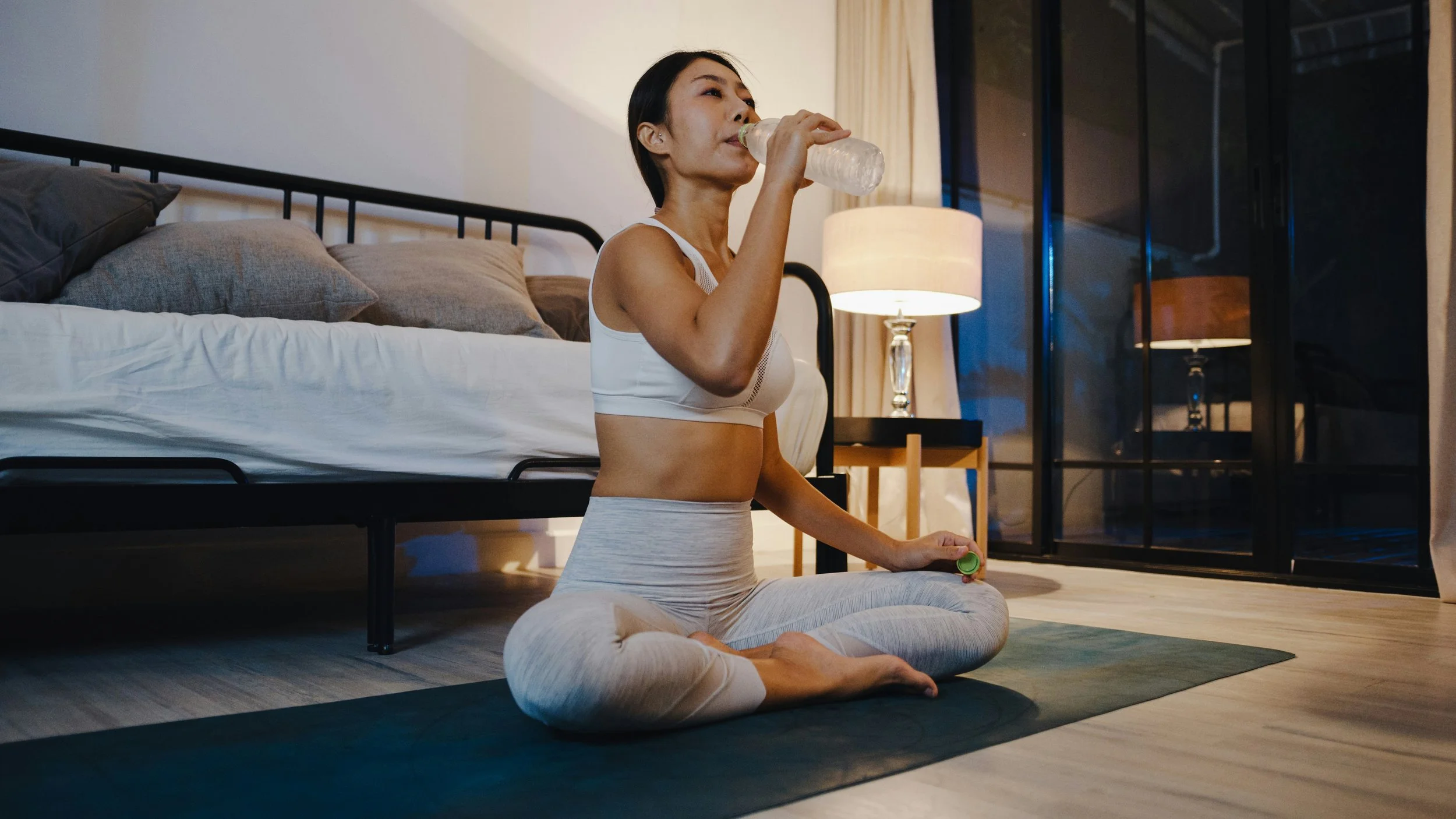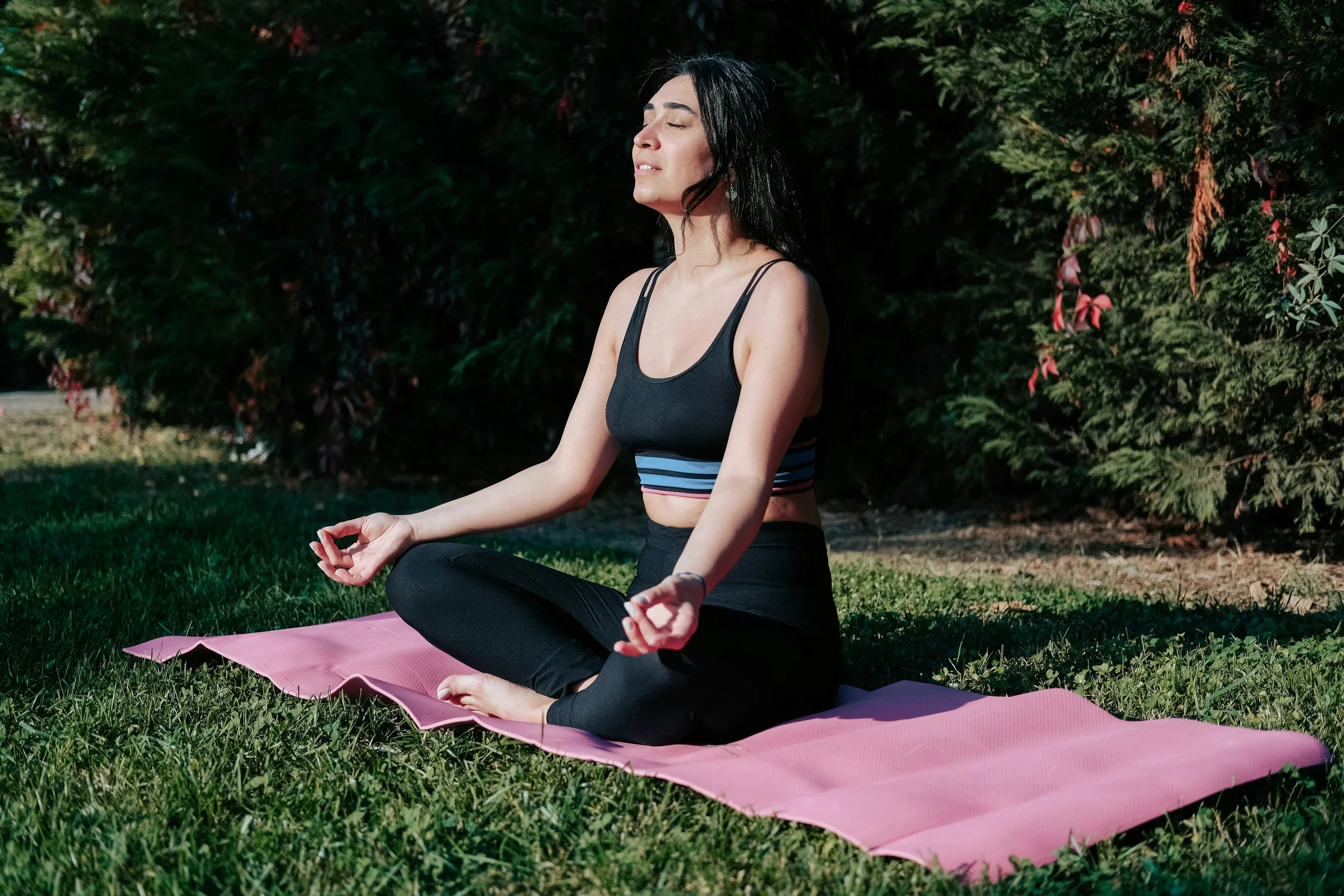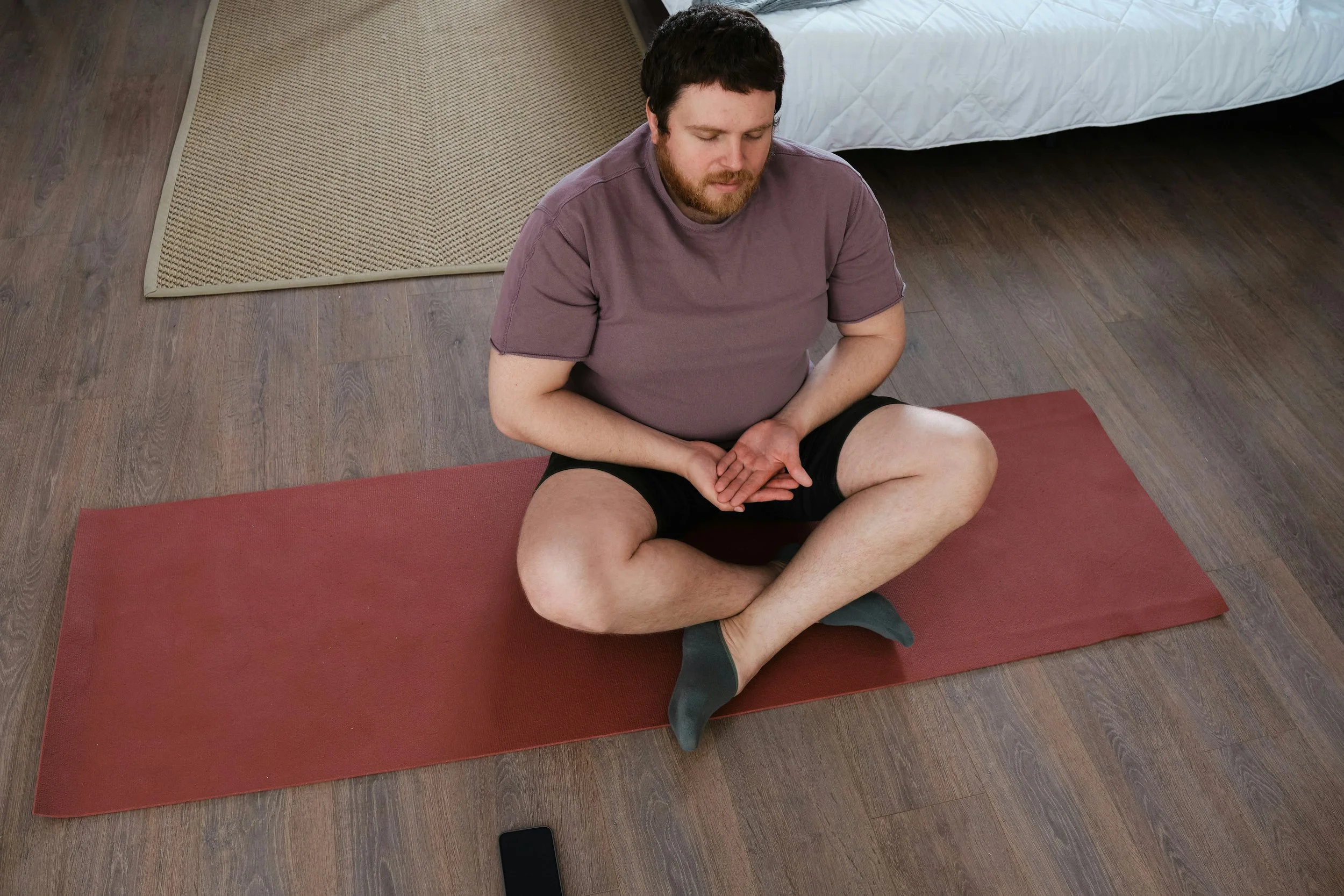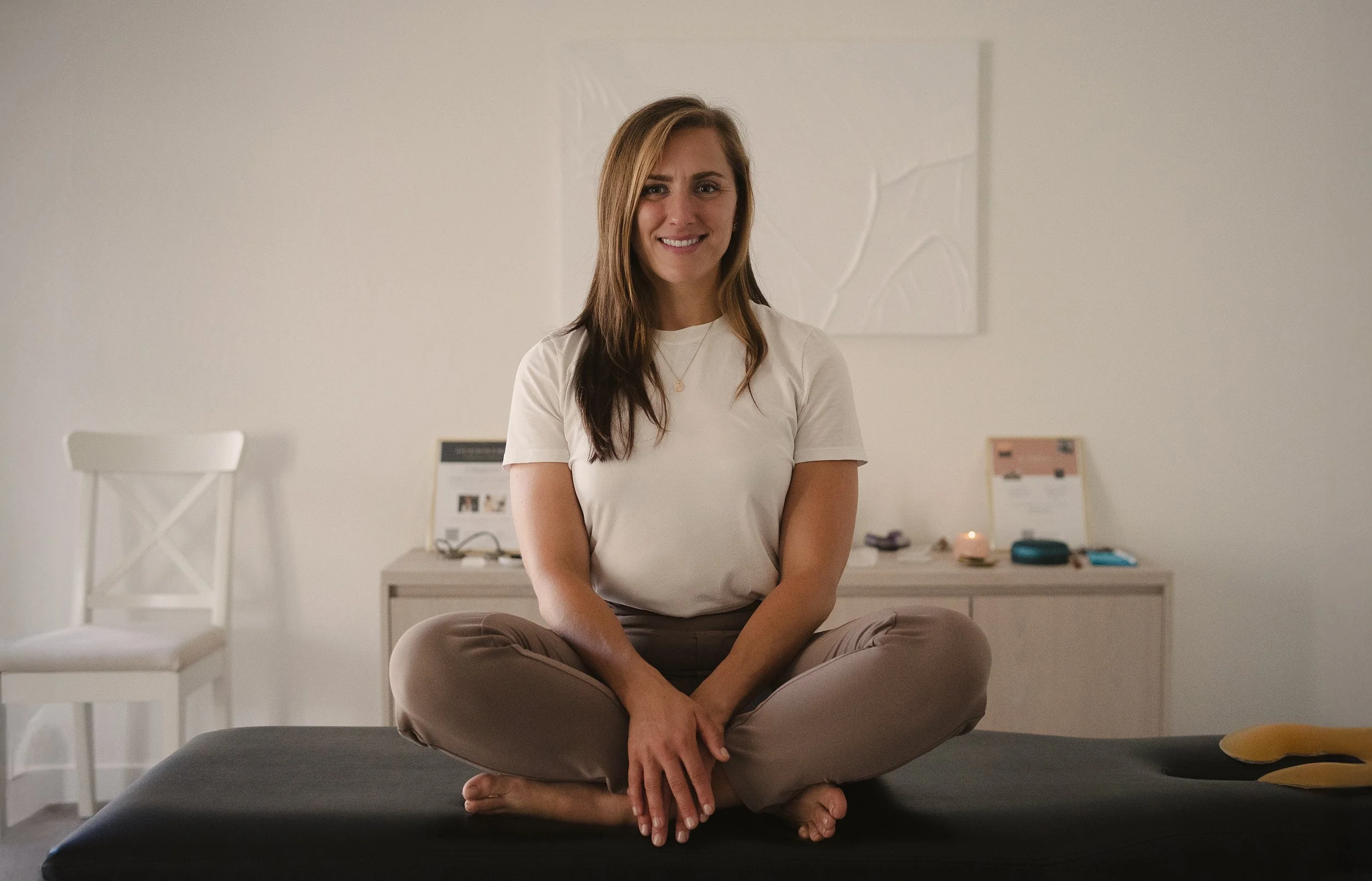Meditation at Home: Your Gateway to Daily Peace and Inner Clarity
When people first reach out about learning to meditate, their messages often begin with a familiar refrain:
"I've tried meditating so many times, but I can never seem to make it stick. My mind just goes crazy, and I feel like I'm doing it wrong."
Like many people, they've fallen into the trap of thinking meditation required perfect stillness, complete mental silence, or special circumstances to be effective. They've downloaded apps, attended a few classes, but nothing seemed to translate into a sustainable practice they could maintain at home.
"I know meditation would help me," they often continue. "I'm constantly stressed, my mind never stops racing, and I feel disconnected from myself. But every time I try to sit quietly, I just get more agitated."
This story reflects a common misconception about meditation: that it's about emptying the mind or achieving some perfect state of calm.
In reality, meditation is simply about paying attention to your whole experience—including the racing thoughts, the restlessness, and yes, even the agitation.
More importantly, developing a meditation practice at home isn't about creating perfect conditions or finding endless stretches of uninterrupted time. It's about working with your real life, your actual schedule, and your current circumstances to cultivate moments of presence and awareness.
Understanding Meditation: Beyond the Myths
Before we explore the practical aspects of meditating at home, let's address some common misconceptions that keep people from establishing a sustainable practice:
Myth 1: "Good" Meditation Means a Quiet Mind
The goal of meditation isn't to stop your thoughts—it's to change your relationship with them.
Your mind is designed to think, and trying to force it into silence often creates more agitation. Instead, meditation helps you observe your thoughts without being completely controlled by them.
Myth 2: You Need Special Equipment or Perfect Conditions
While meditation cushions, candles, and serene environments can be supportive, they're not necessary.
Some of the most profound meditation experiences happen in ordinary places with whatever you have available. Your kitchen chair, your bedroom floor, even your car (when parked) can become a meditation space.
Myth 3: Longer Sessions Are Always Better
A consistent 5-minute daily practice is infinitely more valuable than an hour-long session once a week.
Your nervous system benefits from regular, repeated experiences of shifting into awareness rather than occasional intensive experiences.
Myth 4: Meditation Requires Religious or Spiritual Beliefs
While meditation is certainly part of many spiritual traditions, it can be practiced as a secular tool for mental health, stress reduction, and overall wellbeing.
The techniques work regardless of your beliefs or background.
The Science Behind Home Meditation Practice
Research in neuroscience has revealed remarkable insights about how regular meditation practice affects brain structure and function. When you meditate at home consistently, you're literally rewiring your brain for greater calm, focus, and emotional resilience.
Neuroplasticity and Meditation
Studies using brain imaging technology show that regular meditation practice creates measurable changes in brain structure within just eight weeks. These changes include:
Increased gray matter density in areas associated with learning, memory, and emotional regulation
Thicker prefrontal cortex, which improves executive function and decision-making
Reduced amygdala reactivity, leading to less intense stress responses
Enhanced connectivity between different brain regions, improving overall neural efficiency
Stress Response and the Vagus Nerve
Regular meditation practice activates the parasympathetic nervous system—your body's "rest and digest" response. This activation is mediated largely through the vagus nerve, which connects your brain to major organs throughout your body.
People with regular meditation practices typically show:
• Lower cortisol levels (stress hormone)
• Improved heart rate variability
• Better immune system function
• Reduced inflammation markers
• Enhanced sleep quality
The Default Mode Network
Neuroscientists have identified a network of brain regions called the Default Mode Network (DMN) that's active when we're not focused on a specific task. An overactive DMN is associated with anxiety, depression, and rumination.
Meditation practice helps regulate the DMN, reducing the mental chatter and worry loops that can dominate our inner experience. This is why regular meditators often report feeling more present and less caught up in repetitive thinking patterns.
Creating Your Home Meditation Space
One of the advantages of establishing a meditation practice at home is that you can create an environment that supports your specific needs and preferences. However, remember that the most important element of any meditation space is your intention to practice there.
Choosing Your Space
Your meditation area doesn't need to be large or elaborate. Consider these factors when selecting a spot:
Consistency: Choose a place where you can practice regularly without constantly rearranging furniture or competing with other activities.
Relative Quiet: While perfect silence isn't necessary, avoid spaces with frequent loud interruptions or distractions.
Comfort: You'll want to be comfortable enough to sit still without being so cozy that you fall asleep.
Personal Connection: Choose a space that feels good to you—whether that's near a window with natural light, in a corner with your favorite blanket, or simply the spot where you naturally feel most at ease.
Basic Elements (All Optional)
Seating:
• Floor cushion or meditation pillow
• Straight-backed chair
• Yoga bolster
• Even your bed can work if sitting elsewhere is uncomfortable
Support Items:
• Blanket for warmth and comfort
• Wall or back cushion for support
• Small table for a timer or meaningful objects
Sensory Support:
• Natural lighting when possible
• Plants or natural elements
• Essential oils or incense if you enjoy them
• Meaningful objects like stones, photos, or artwork
Remember, none of these items are required. Some of the most profound meditation experiences happen with nothing more than awareness and intention.
Meditation Techniques Perfect for Home Practice
There are countless meditation techniques, but certain approaches are particularly well-suited for home practice because they're simple to learn, don't require instruction from others, and can be adapted to various time constraints.
Breath Awareness Meditation
This foundational practice involves focusing attention on your breath as it naturally flows in and out. It's simple but not necessarily easy, as you'll likely notice how often your mind wanders to other topics.
Basic Instructions:
1. Sit comfortably with your spine straight but not rigid
2. Close your eyes or soften your gaze downward
3. Begin noticing your breath without trying to change it
4. When you notice your mind wandering (and it will), gently return attention to your breath
5. Continue for your chosen duration
Variations:
Count breaths from 1 to 10, then start over
Focus on the sensation of breathing at your nostrils
Notice the pause between inhale and exhale
Follow the breath throughout your entire body
Body Scan Meditation
This practice involves systematically bringing attention to different parts of your body, often starting from your feet and moving upward. It's particularly helpful for developing body awareness and releasing physical tension.
Basic Instructions:
1. Lie down comfortably or sit with good support
2. Begin by taking several deep breaths to settle
3. Start with your feet, noticing any sensations present
4. Gradually move your attention up through your legs, torso, arms, neck, and head
5. Spend 30 seconds to several minutes with each body region
6. Notice areas of tension, comfort, warmth, coolness—whatever is present
7. End by sensing your body as a complete whole
Loving-Kindness Meditation
This practice involves cultivating feelings of warmth and care, first for yourself, then extending those feelings to others. It's particularly helpful for those dealing with self-criticism or difficult relationships.
Basic Instructions:
1. Begin with several minutes of breath awareness to settle
2. Bring yourself to mind and silently offer these phrases:
"May I be happy"
"May I be healthy"
"May I be at peace"
"May I live with ease"
3. Next, bring a loved one to mind and offer the same phrases to them
4. Continue with a neutral person, a difficult person, and finally all beings everywhere
5. Return to offering the phrases to yourself
Walking Meditation
Perfect for those who find sitting meditation challenging, walking meditation brings mindful awareness to the simple act of moving through space.
Basic Instructions:
1. Choose a path 10-20 steps long (indoor hallway works fine)
2. Begin walking more slowly than usual
3. Focus on the sensations of lifting, moving, and placing each foot
4. When you reach the end of your path, pause and turn mindfully
5. Continue walking back and forth for your practice duration
6. If your mind wanders, simply return attention to the physical act of walking
Mantra or Word-Based Meditation
Using a repeated word or phrase can give the mind something specific to focus on while still cultivating awareness and presence.
Basic Instructions:
1. Choose a word or short phrase that feels meaningful or neutral
2. Common choices include "peace," "breathe," "let go," or "I am love”
3. Repeat your chosen word or phrase either silently or quietly aloud
4. Coordinate with your breathing if helpful (e.g., "let" on inhale, "go" on exhale)
5. When your mind wanders, return to your mantra
Establishing a Sustainable Home Practice
The key to successful meditation at home is creating a routine that fits realistically into your life.
Rather than attempting ambitious schedules that are likely to fail, focus on building consistency through small, manageable commitments.
Starting Small: The 5-Minute Foundation
Begin with just 5 minutes daily. This may seem insignificant, but it's long enough to experience the benefits of meditation while being short enough to maintain consistently. Many people find that once they establish this foundation, they naturally begin extending their practice time.
Sample 5-Minute Session:
1 minute: Settling in, finding comfortable posture
3 minutes: Core practice (breath awareness, body scan, etc.)
1 minute: Gentle transition back to daily activities
Building to 10-15 Minutes
Once you've maintained a 5-minute practice for several weeks, you might naturally feel drawn to sit a bit longer. This extended time allows for deeper settling and more opportunity to work with whatever arises during your practice.
The Optimal Time: Finding Your Rhythm
Morning Practice Benefits:
Sets a calm, centered tone for your day
Mind is often clearer before daily stresses accumulate
Creates a sense of accomplishment early in the day
Helps establish meditation as a non-negotiable routine
Evening Practice Benefits:
Provides a transition from day's activities to rest
Can improve sleep quality
Offers opportunity to process and release daily stress
May feel more natural if you're not a morning person
Midday Reset:
Breaks up stress accumulation during busy days
Can be done in office settings or during lunch breaks
Helps maintain energy and focus for afternoon activities
The best time is ultimately the time you can practice most consistently. Some people maintain both morning and evening practices, while others find one daily session works better for their lifestyle.
Working with Common Challenges
"I Don't Have Time"
Start with 3-5 minutes daily
Practice during existing routines (while coffee brews, before shower)
Use transition moments (before starting car, after arriving home)
Remember that consistency matters more than duration
"My Mind Is Too Busy"
Understand that noticing a busy mind IS meditation
Use techniques that give your mind something to focus on (counting breaths, mantra)
Try movement-based practices if sitting feels too agitating
Consider guided meditations when starting out
"I Keep Falling Asleep"
Sit rather than lie down
Practice with eyes slightly open
Choose times when you're naturally alert
Ensure your room isn't too warm
Try walking meditation instead
"I Don't Feel Like I'm Getting Anywhere"
Release expectations of specific experiences
Notice subtle changes in daily life rather than just during meditation
Keep a simple journal of your practice
Remember that benefits often appear gradually
"I Keep Forgetting to Practice"
Link practice to an existing habit (after brushing teeth, before dinner)
Set phone reminders or calendar appointments
Place visual cues in your environment
Start with the same time daily to build routine
Advanced Home Practice Considerations
As your meditation practice matures, you might explore additional elements that can deepen your experience:
Retreat Days at Home
Occasionally, you might dedicate longer periods to practice—perhaps a few hours on a weekend morning or an entire day of intermittent meditation.
These extended periods can provide insights and experiences that shorter daily sessions don't offer.
Sample Half-Day Home Retreat:
9:00 AM: 20-minute sitting meditation
9:30 AM: Mindful breakfast in silence
10:00 AM: 30-minute walking meditation (outdoor if possible)
10:45 AM: Journaling or reflective writing
11:15 AM: 20-minute loving-kindness meditation
11:45 AM: Rest, tea, light reading on meditation topics
12:15 PM: Final 15-minute sitting practice
Working with Emotions and Difficult States
As your practice develops, you'll inevitably encounter challenging emotions, physical discomfort, or mental states during meditation. Rather than viewing these as obstacles, they can become valuable aspects of your practice.
When Strong Emotions Arise:
Notice where you feel the emotion in your body
Breathe gently with the sensation rather than trying to change it
Offer yourself compassion for whatever you're experiencing
Remember that emotions are temporary visitors, not permanent residents
Physical Discomfort:
Distinguish between discomfort and actual pain that requires attention
Adjust your posture mindfully if needed
Use discomfort as an object of meditation—noticing its qualities without immediately reacting
Experiment with different sitting positions or supports
Integrating Meditation with Daily Activities
Advanced practice involves bringing meditative awareness into everyday activities:
Mindful Daily Activities:
Eating meditation: paying full attention to taste, texture, and sensation
Dish washing meditation: focusing on water temperature, soap bubbles, movement
Driving meditation: maintaining awareness while staying safe and focused
Work meditation: bringing conscious breathing and presence to routine tasks
The Ripple Effects: How Home Meditation Practice Impacts Daily Life
One of the most remarkable aspects of establishing a regular meditation practice at home is how it begins to influence the rest of your life. Students often report changes that extend far beyond their formal sitting practice:
Emotional Regulation
Regular meditation practice enhances your ability to notice emotions as they arise, creating space between the initial emotional impulse and your response. This doesn't mean you stop feeling strongly—rather, you develop more choice in how you respond to intense feelings.
Stress Resilience
While meditation doesn't eliminate life stressors, it changes your relationship with stress. Many practitioners find they recover more quickly from difficult situations and feel less overwhelmed by daily pressures.
Improved Relationships
As you develop greater awareness of your own internal states, you often become more attuned to others. Many meditators report feeling more patient, compassionate, and present in their interactions with family, friends, and colleagues.
Enhanced Creativity and Problem-Solving
The quiet, receptive state cultivated in meditation often allows new insights and solutions to emerge. Many people find that their most creative ideas arise during or after their meditation practice.
Better Sleep Quality
Regular meditation practice helps regulate the nervous system, often leading to improved sleep quality. The skills you develop in meditation—letting go of thoughts, returning to present-moment awareness—translate directly to falling asleep more easily.
Adapting Practice for Different Life Circumstances
Life inevitably brings changes, and a sustainable meditation practice must be flexible enough to adapt to different circumstances:
Travel and Schedule Disruptions
Maintain shorter practices when regular routine isn't possible
Use guided meditations on apps when familiar environment isn't available
Practice meditation techniques during travel itself (breathing awareness during flights, walking meditation in airports)
Remember that some practice is always better than no practice
Illness and Physical Limitations
Adapt posture to current physical capacity
Use lying-down positions if sitting is uncomfortable
Focus on breathing or body awareness practices that don't require movement
Consider visualization or loving-kindness practices that don't depend on physical comfort
Emotional Difficult Periods
Be especially gentle with yourself during challenging times
Consider guided meditations for additional support
Use practices specifically designed for difficult emotions
Remember that meditation isn't about feeling good—it's about being present with whatever you're experiencing
Family Life and Shared Spaces
Practice early morning or late evening when others are sleeping
Use bathroom or bedroom for brief sessions if needed
Include family members who are interested (children often enjoy simple breathing exercises)
Model consistent practice rather than trying to convince others to join
Resources for Deepening Your Home Practice
As your meditation practice develops, you might want additional support and guidance:
Books and Written Resources
Classic texts like "Wherever You Go, There You Are" by Jon Kabat-Zinn
Modern approaches like "Real Happiness" by Sharon Salzberg
Scientific perspectives like "The Science of Enlightenment" by Shinzen Young
Online Communities and Apps
Meditation apps for guided sessions and progress tracking
Online communities for support and questions
Video instructions for proper posture and technique
In-Person Support
Local meditation groups or sanghas
Workshops and retreats when possible
Teachers who offer individual guidance
Professional Guidance
Sometimes working with an experienced teacher can accelerate your progress and help you navigate challenges that arise in practice.
Consider seeking professional support if:
• You're dealing with trauma that affects your ability to be present
• You have specific questions about technique or experience
• You want personalized guidance for your unique circumstances
• You're interested in exploring advanced practices safely
Your Meditation Journey Begins Now
The most important step in establishing a home meditation practice is simply beginning.
Not tomorrow, not when you have the perfect setup or unlimited time—but today, right now, with whatever you have available.
Remember that meditation isn't about achieving any particular state or having specific experiences. It's about showing up consistently to pay attention to your life as it actually is, not as you think it should be.
Your practice will evolve and change over time. Some days will feel peaceful and profound, others will be filled with restlessness or distraction. Both experiences are valuable parts of the journey.
The path of meditation is ultimately about developing a kinder, more aware relationship with yourself. In a world that often demands we constantly do and achieve and produce, meditation offers something radical: the practice of simply being present with what is.
Your meditation cushion—or kitchen chair, or bedroom floor—is waiting for you.
Your breath is always available. Your capacity for awareness, peace, and wisdom is already present within you.
The practice of meditation at home is an invitation to discover this innate capacity and nurture it through consistent, gentle attention.
Every moment you spend in awareness is a gift to yourself and, rippling outward, to everyone whose life you touch.
Begin where you are. Start as you are. Your meditation practice is ready when you are.
Ready to deepen your meditation practice at home?
Explore comprehensive guidance, meditation courses, and ongoing support designed to help you establish and maintain a sustainable daily practice that fits your real life and actual circumstances.
About Dr. Alandi Stec
Dr. Alandi Stec is a Doctor of Chiropractic and Reiki Master serving the Pleasant Hill and greater Bay Area community. She specializes in gentle, nervous system-centered approaches to health and wellness, combining Bio-Geometric Integration with craniosacral work and energy healing to help individuals and families discover their body's innate capacity for healing and growth.









